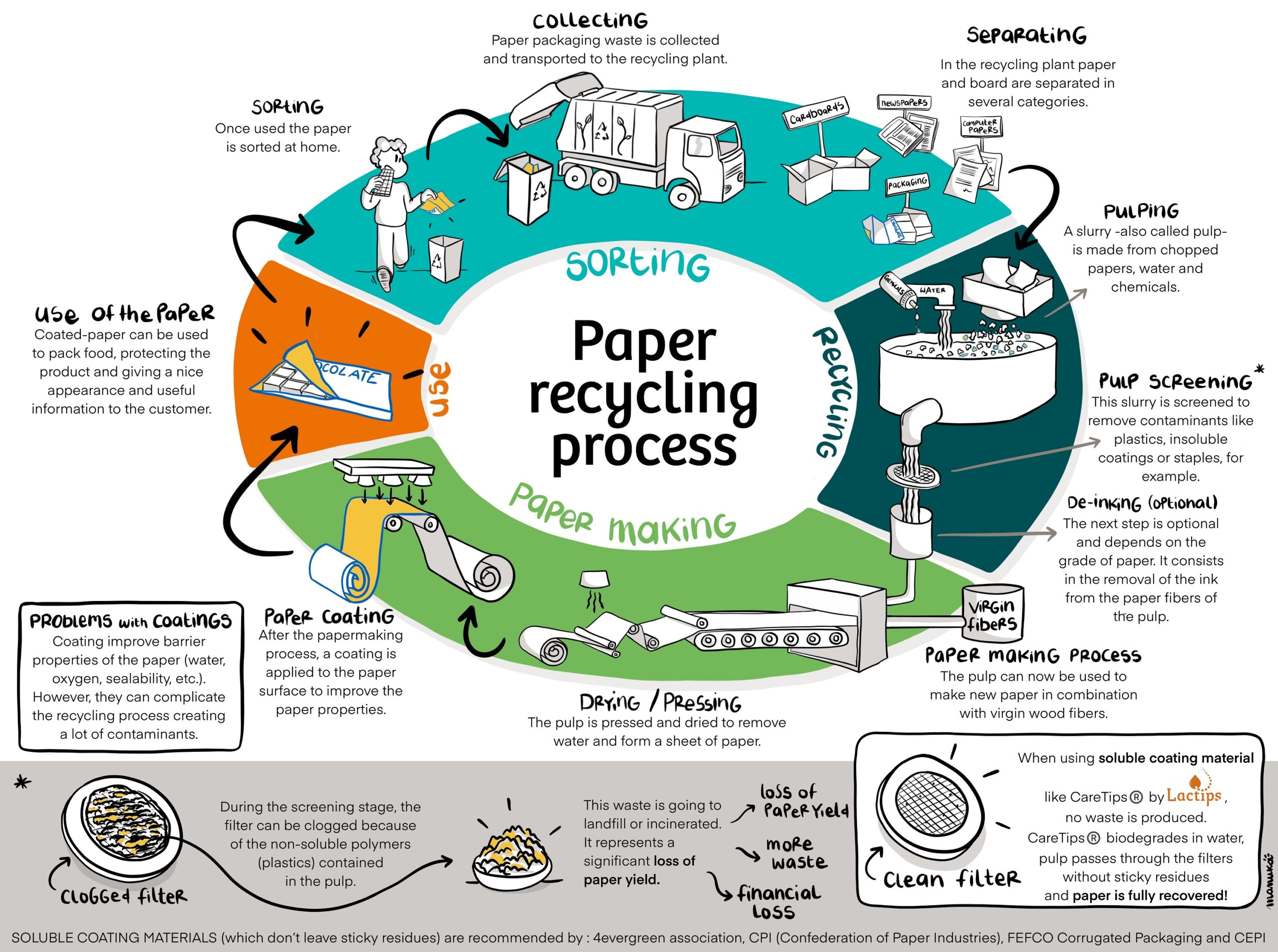Paper packaging often incorporates plastic materials to help preserve foodstuffs (oxygen, fats, etc.). The question then arises as to whether these complex (multilayers) packagings are recyclable?
Coated-paper can be used to pack food, protecting the product and giving a nice appearance and useful information to the customer. Once used, the paper is sorted at home. Then, the paper packaging waste is collected and transported to the recycling plant. In the recycling plant, paper and board are separated in several categories.
The recycling process starts with pulping, which is a slurry (also called pulp) made from the collected and chopped papers, water and chemicals. This slurry is then screened to remove contaminants like plastics, insoluble coatings or staples, for example. The next step depends on the grade of the paper. De-inking (optional) consists in the removal of the ink from the paper fibres of the pulp.
The pulp can now be used to make new paper in combination with virgin wood fibres. The pulp is pressed and dried to remove water and form a sheet of paper.
After the papermaking process, a coating is applied to the paper surface to improve the paper properties. Coatings improve the barrier properties of the paper (water, oxygen, sealability, etc.). However, they can complicate the recycling process creating a lot of contaminants.
During the screening stage, the filter can be clogged because of the non-soluble polymers (oil-based plastics) contained in the pulp. This waste is going to landfill or incinerated. It also represents a significant loss of fibre yield.
Using a soluble coating material such as CareTips® by Lactips produces no waste. CareTips® biodegrades in water, pulp passes through the filters without sticky residues and paper is fully recovered.
Soluble coating materials (which do not leave sticky residues) are recommanded by: 4evergreen association, CPI (Confederation of Paper Industries), FEFCO Corrugated Packaging and CEPI.



